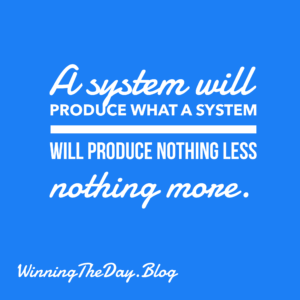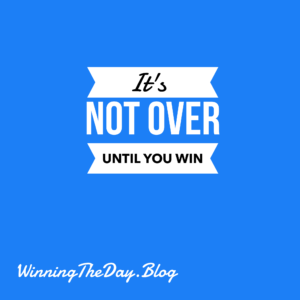Every Monday Matters!
For this Mindset Monday, I wanted to share some reflections from a call I led earlier today. We got into a really powerful topic: Working at the Speed of Trust. It reminded me so much of Stephen Covey’s book, “The Speed of Trust.” If you haven’t read it, he makes such a compelling case that trust isn’t just a nice-to-have; it’s something real and measurable that truly affects how quickly things get done and what they cost, both in our work and personal lives.
The big takeaway for me is always that high trust just makes everything flow better, while low trust really bogs things down and adds to the burden.
The Ripple Effect of Trust
One of the things Covey talks about that really resonates is how trust isn’t just about others; it truly starts with us. That idea of Self-Trust, building our own credibility, is the foundation. From there, it naturally extends to our Relationships, the teams we’re part of, how we’re seen in the Market, and even Society as a whole.
Foundational Trust: It Starts With You
It’s a great reminder that building trust with others really has to start with ourselves. Covey outlines these “4 Cores of Credibility,” and I find them so insightful for self-reflection:
- Integrity: Am I being true to myself and my values? Is there consistency in what I say and do?
- Intent: What’s driving me? I always hope people see that I genuinely care and have their best interests at heart.
- Capabilities: Am I keeping my skills sharp and relevant? It’s about knowing I can actually do what’s needed.
- Results: What’s my follow-through like? Having a solid track record speaks volumes.
And that Covey quote, “You can’t talk your way out of a problem you behaved your way into,” always hits home. It’s our actions and who we are that really build that solid foundation of credibility.
Building Bridges: The 13 Behaviors of High-Trust Leaders
Once we’re feeling solid in our own trustworthiness, it’s amazing how that can flow into building stronger relationships. Covey shares 13 Key Behaviors that I think are fantastic guideposts for nurturing that Relationship Trust. They’re all things we can actively practice:
- Talk Straight: Just being honest and letting people know where you stand.
- Demonstrate Respect: Genuinely showing others you care and value them.
- Create Transparency: Being open and real, so people can see what’s happening.
- Right Wrongs: Owning it when we mess up and making things right, quickly.
- Show Loyalty: Giving credit where it’s due and speaking well of others.
- Deliver Results: This is a big one for me – getting the right things done and making things happen.
- Get Better: Always looking for ways to learn, grow, and improve.
- Confront Reality: Tackling the tough stuff directly, even when it’s uncomfortable.
- Clarify Expectations: Making sure everyone is on the same page.
- Practice Accountability: Holding ourselves and others responsible for commitments.
- Listen First: Really trying to understand before jumping in with a response.
- Keep Commitments: Doing what you say you’re going to do. Simple, but so powerful.
- Extend Trust: Being willing to give trust to others often encourages them to reciprocate.
Putting Trust into Action: Practical Strategies for Our Industry
It was also great to connect Covey’s ideas to what we do every day in our industry. We talked about a few practical things that really bring these trust principles to life for us:
- Radical Transparency: This feels so aligned with talking straight. Just being upfront and honest in all our dealings.
- Prioritize Meaningful Interaction: Every conversation is a chance to connect, to really listen and show we care.
- Become the Undisputed Hyper-Local Expert (and Share It!): This is all about building our ‘Capabilities’ and then generously sharing that knowledge. It shows we’re invested.
- Over-Communicate: We all know that feeling when you’re left wondering! Keeping people in the loop proactively is huge for building confidence and showing we’re on top of things. After all, the #1 complaint from consumers can be, “I never hear from my agent!”
- Show Your Value, Don’t Just State It: This is where ‘Delivering Results’ really comes into play. It’s about the actions and outcomes that speak for themselves. It reminds me of that saying, “
Repeat business isn’t luck — it’s earned. I deliver results, not promises.
Why This Matters: The Real-World Impact
Thinking about all this, it’s so clear that these aren’t just abstract ideas. In our world, especially with our clients, trust is everything. It’s that feeling when a client comes back, or refers someone new – that’s the best compliment, isn’t it? It tells me, “A returning client is the greatest compliment. Your trust means everything — I deliver, every time.”
I’ve definitely seen how low trust can create so many headaches and slow everything down. But when that trust is there, things just move smoother, decisions happen faster, and it opens the door for so much more. It’s like when clients know,
You need someone who shows up and gets it done — every time. That’s what I do.
Wrapping Up: Investing in Trust, Together
My main reflection from our chat and revisiting Covey’s work is just how vital it is to actively nurture trust. It’s a continuous journey, starting with ourselves and how we show up in every interaction.
Maybe this week, it’s a good opportunity for all of us to think about:
- Which of those 4 Cores of Credibility feels like an area I can focus on for myself?
- Is there one of those 13 Behaviors, or one of our industry strategies, that I could be more mindful of?
It really is an investment that pays off in so many ways – making things easier, more efficient, and building those strong connections. Here’s to all of us aiming to work at the speed of trust! Because at the end of the day, what we do is truly “Built on trust. Grown through referrals. Backed by real results.” Let’s keep earning it.




